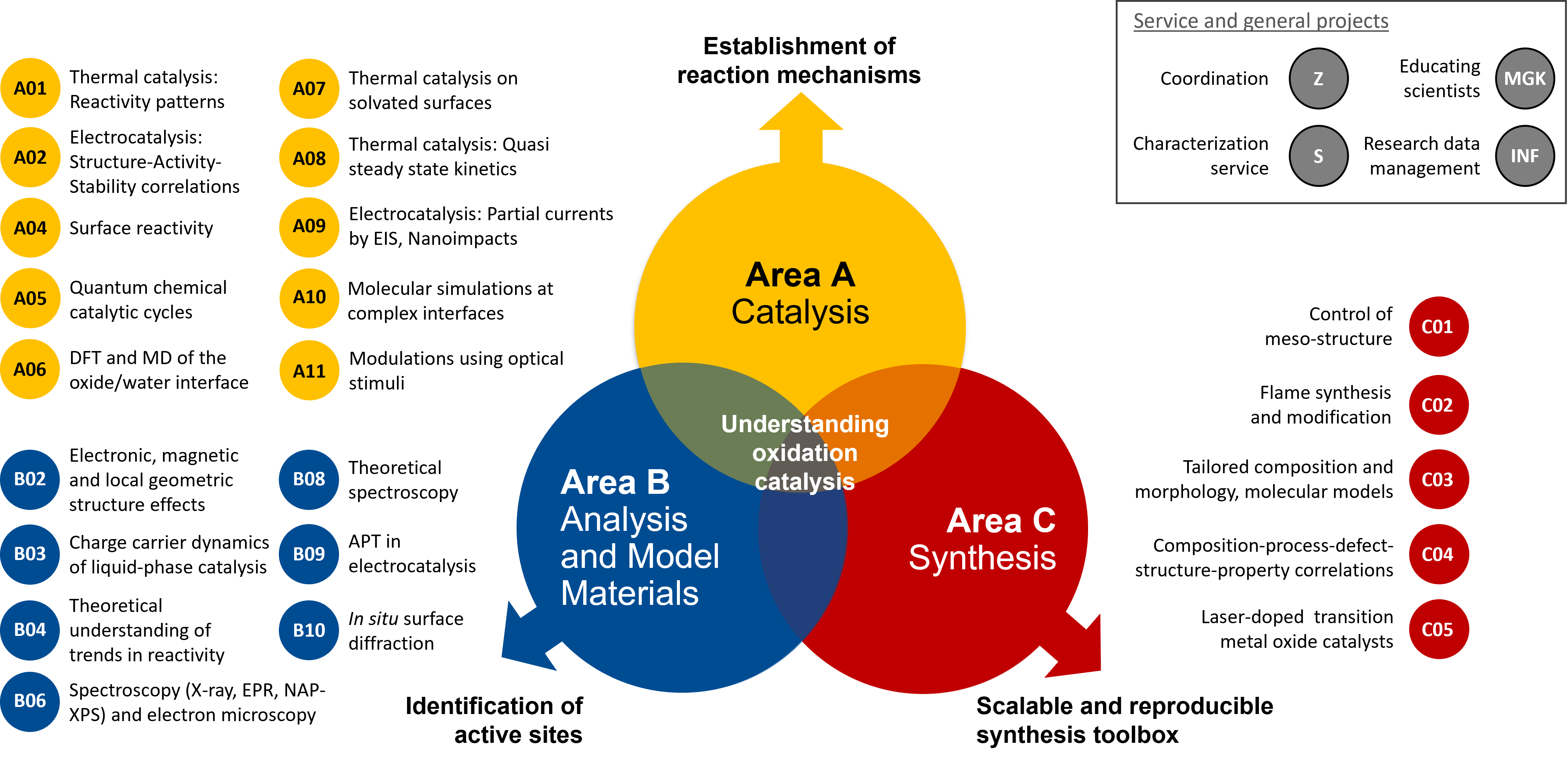In this initiative, 22 research groups from the Ruhr-Universität Bochum, Universität Duisburg-Essen, Christian-Albrechts-Universität zu Kiel, the Max-Planck-Institut für chemische Energiekonversion, the Max-Planck-Institut für Kohlenforschung, both in Mülheim/Ruhr and the Fritz-Haber-Institut der Max-Planck-Gesellschaft, Berlin, have joined forces to establish the CRC/TRR 247 with an ambitious research program that comprehensively investigates the Heterogeneous oxidation catalysis in the liquid phase. Joint activities will ensure close ties between the groups and a comprehensive education of the PhD students working in the CRC.
The overall goal of the CRC/TRR 247 is to enable a rational design of new, abundant and superior catalysts based on mixed metal oxides for catalytic selective oxidation processes in the liquid phase. Thereby, the CRC/TRR 247 aims at contributing to the efficient use of sustainable resources for the production of chemicals in a post-fossil era. The ambitious scientific vision of the consortium is to advance the fundamental understanding of catalyzed oxidation reactions at the solid–liquid interface of mixed oxides to a new level. Compared to gas-phase catalysis on metals, such understanding is hindered by a higher structural and compositional complexity on both sides of the interface. Therefore, a three-stage research strategy has been developed that acknowledges the role of real structure of the oxide surface. The strategy includes (i) the generation of a consistent base of empirical knowledge within a pre-defined parameter set (materials and reactions) in form of structure–composition–reactivity correlations (focus of the first funding period), (ii) the elucidation of reaction mechanisms and identification of active sites that are responsible for these correlations (focus of the second funding period), and (iii) the application of this new knowledge for predictions beyond the initial parameter set for a rational design of superior catalysts (focus of the third funding period). The CRC/TRR 247’s structure unites the required experimental and theoretical techniques for this research agenda from chemistry, physics, and engineering in three Research Areas: A (Catalysis), B (Analysis), and C (Synthesis).
